Chef in Residence
Chef in Residence 2022 (Part 1)
“… to pass on and develop the food culture that has been inherited in Tachibana-machi, Yame City with others…” This is the guiding principle that started the Chef in Residence program which centers on the former Ouchi Residence. Owner of Tokyo-based élab, Takako Oyama (along with her newborn child), and Chef Yoko Aoyagi, were invited to stay in Tachibana-machi in August and September of 2022. (Their company, élab, focuses on the theme, of “coexistence, circulation, and regeneration with nature.”) This report introduces their first stay in August 2022.
August 22, Monday
Day one of the two-part stay. After everyone arrived, the group headed to the fields of Mr. Osamu Furusho, a local Tachibana-machi farmer. Mr. Furusho left his previous job to become a farmer and is now also the director of Roadside Station Tachibana, one of the places where he sells his produce including vegetables, tomatoes, taro, and leafy greens. The group was also joined by Mr. Furusho’s son who is working hard to become his father’s successor. During the visit, the group was able to get a glimpse of how farming transitions from generation to generation and started to think about new ways of farming and development.
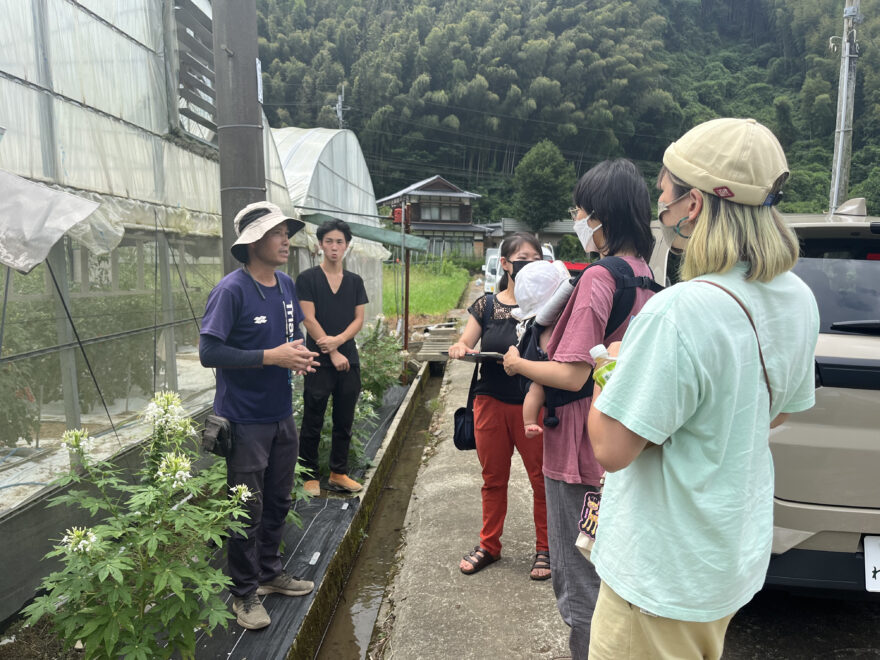
Afterward, the group traveled to Roadside Station Tachibana. Since regulations have changed, soon, only processed goods made under strict manufacturing controls will be sold at roadside stations. Roadside Station Tachibana was one of the first stations to establish a processing facility to accommodate this change, but it still struggles with deciding what kinds of goods to produce. The participants discussed their opinions about developing different processed products and the possibility of exchanging recipes.
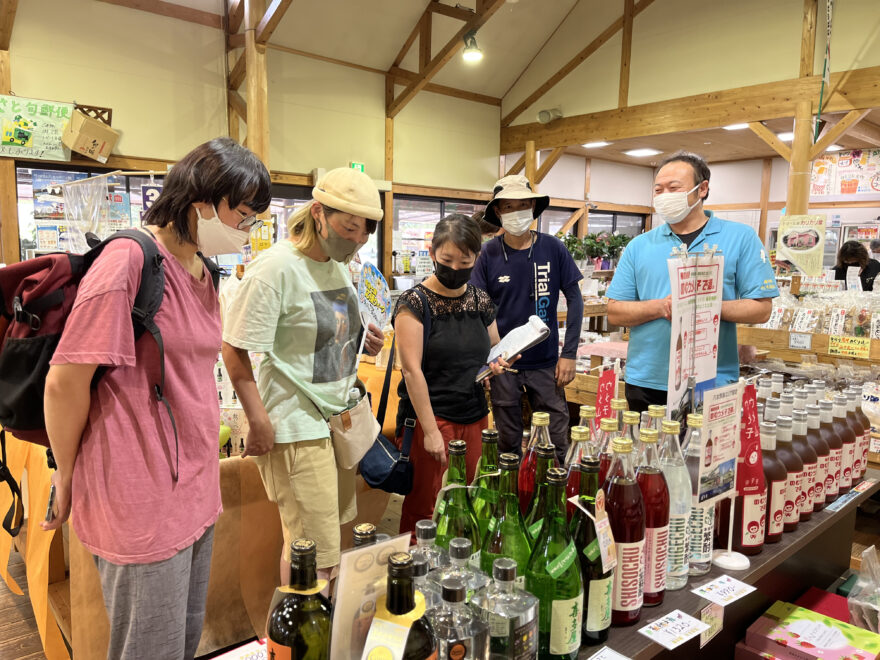
At 4 pm, everyone arrived at “Omichidani no Sato”, a guesthouse for farmers. The group was greeted by Ms. Kayo Nakajima and her daughter Makiko. Everyone was impressed by the delicious taste of their homemade mulberry leaf tea. Ms. Oyama and Ms. Aoyagai from élab shared craft colas they had brought as well as gluten-free snacks.
After, it was time to prepare dinner. Under Ms. Kayo Nakajima’s direction, summer seasonal vegetables that seemed to come from nowhere were soon chopped and arranged on plates. By “making together”, rather than one “teaching” the other, the group bonded quickly.
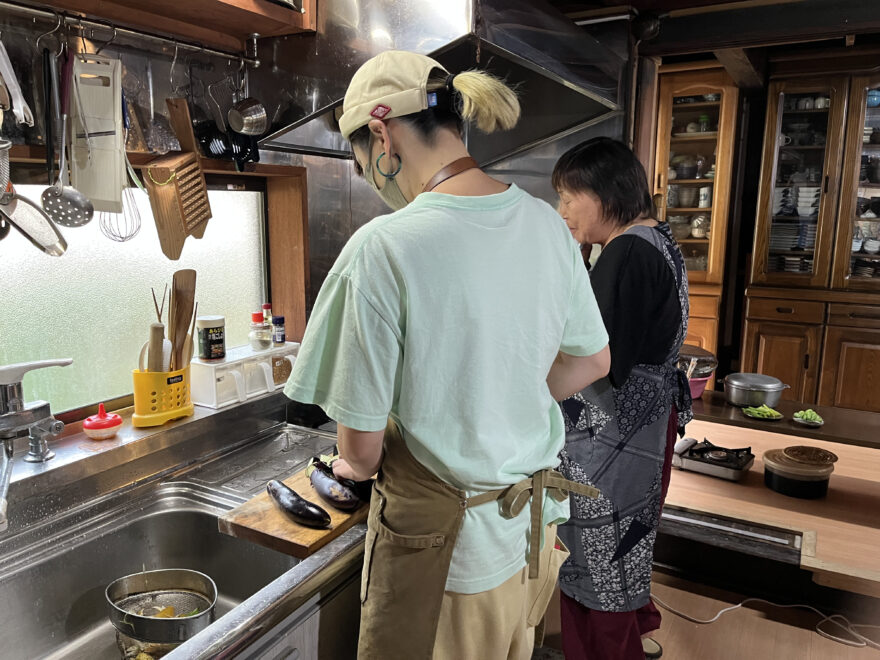
August 23, Tuesday
On this day, the participants visited Seiji Tanaka, a farmer who sells goya (bitter melon) and mandarins to the JA (Japan Agricultural Cooperatives). While the JA helps him maintain a stable farming business, he mentioned that oddly shaped or insect-damaged produce is discarded. Mr. Tanaka gave the group some white bitter melons as well as some cracked oranges as gifts to take home.
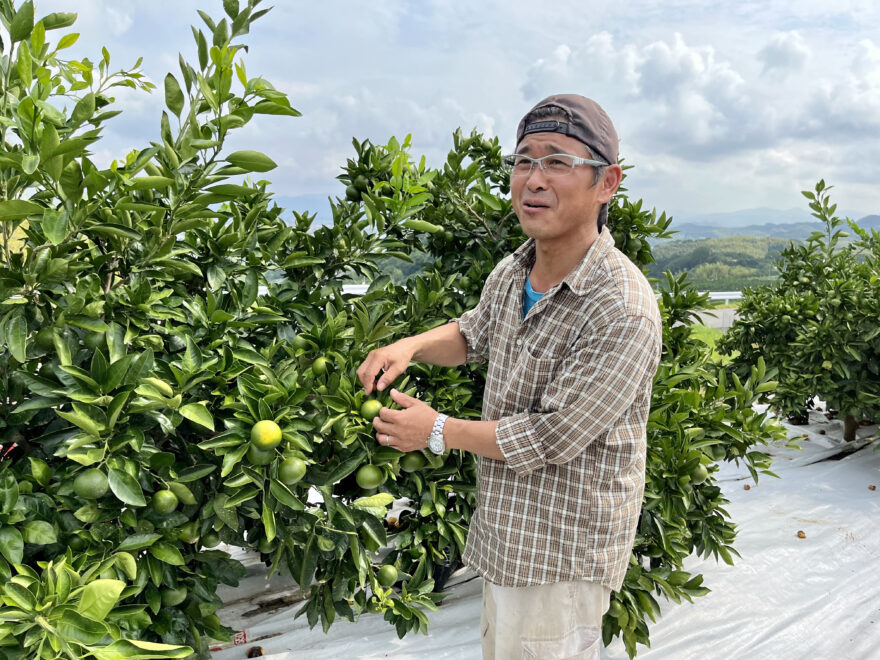
After visiting Mr. Tanaka, the group returned to Omachidani no Sato to participate in a konjac-making workshop. Freshly boiled konjac is an exquisite delicacy! In the past, natural wood ash was used to make lye, an important coagulating ingredient important for making konjac. However, because wood ash is difficult to make and concerns arose that branches might contain residual pesticides, calcium hydroxide was used during the workshop instead.
Since the texture and taste of konjac made with old-fashioned wood ash are different from those of konjac made with calcium hydroxide, the two élab members noted their interest in making konjac the old-fashioned way as well.
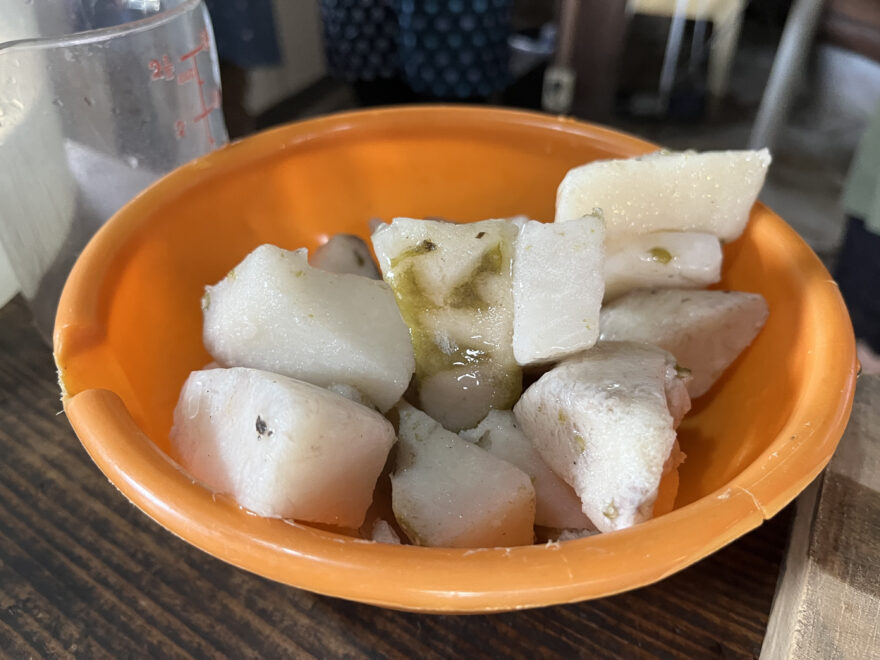
In the afternoon, the group visited the youngest farmer on the trip, Yuichiro Suetsugu. While Mr. Suetsugu’s business is mainly in growing rice and wheat, he also farms a variety of pesticide-free vegetables in the small plot of land next to his house. While these vegetables were originally intended for his family, he now also sells them at roadside stations and through direct sales.
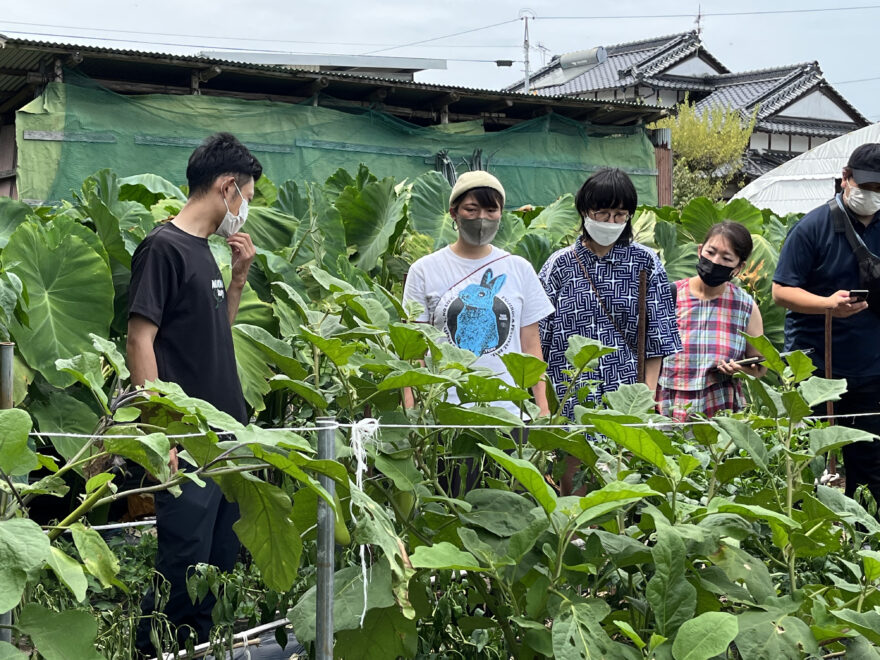
After visiting Mr. Suetsugu, the participants were guided by Kensuke Nakajima from Omichidani no Sato to his family’s kiwi farm. 10 minutes uphill from the village, 300-400 kiwi trees grow on a steep slope. The group learned that harvesting kiwi is difficult work that requires the farmers to constantly bend over. Additionally, kiwis are very susceptible to insects. The group saw a part of the kiwi field that was almost completely destroyed by stink bugs. By visiting the Nakajima family farm, everyone was keenly reminded of the many difficulties of farming.
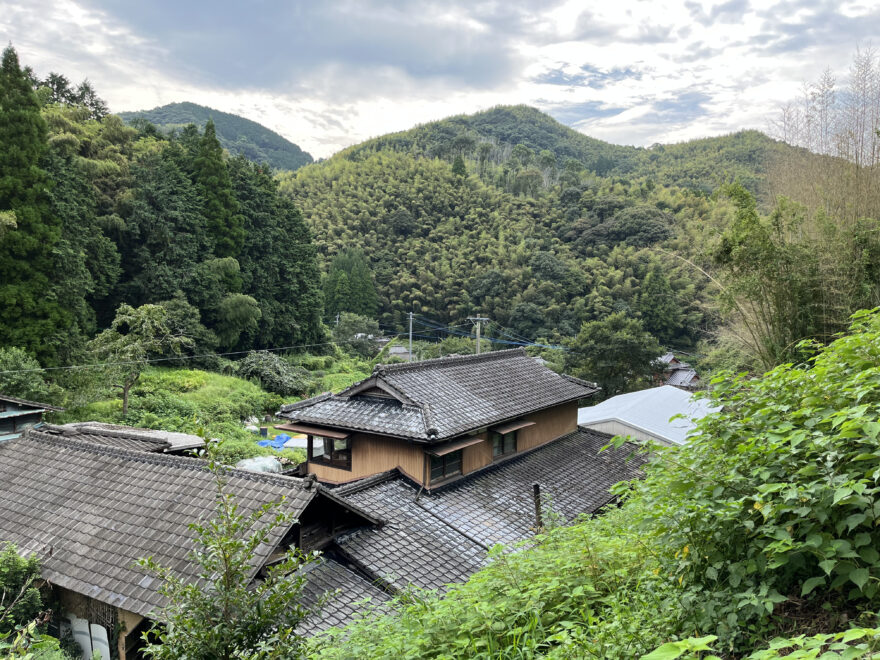
For dinner, the two élab members prepared three dishes using vegetables from Ms. Kayo Nakajima’s garden. The dishes included stir-fried leafy greens with bell peppers, soup made from bitter melon, onion, and basil, and a dish of ginger, bitter melon, and mixed oranges. Only a minimal amount of salt and soy sauce was used to bring out the natural flavors of the vegetables.
The local farmers, Mr. Furusho and Mr. Tanaka also joined the meal and were able to enjoy eating the vegetables they had grown themselves. They mentioned that even as farmers, they rarely have the opportunity to interact with and see the faces of those who cook and eat their produce. For them, this meeting was a valuable experience.
August 24th, Wednesday
At the former Ouchi Residence, the group met with Ms. Maki Tanaka, one of the people instrumental in the restoration of the former Ouchi Residence. She told stories of starting to cook as a young child and talked about the lunch she serves at the Ouchi Residence called “Mother’s Meal”. When Ms. Aoyagi mentioned that at élab, they use every part of each vegetable, from the peels to the roots, including using them to make broth, Ms. Tanaka was impressed.
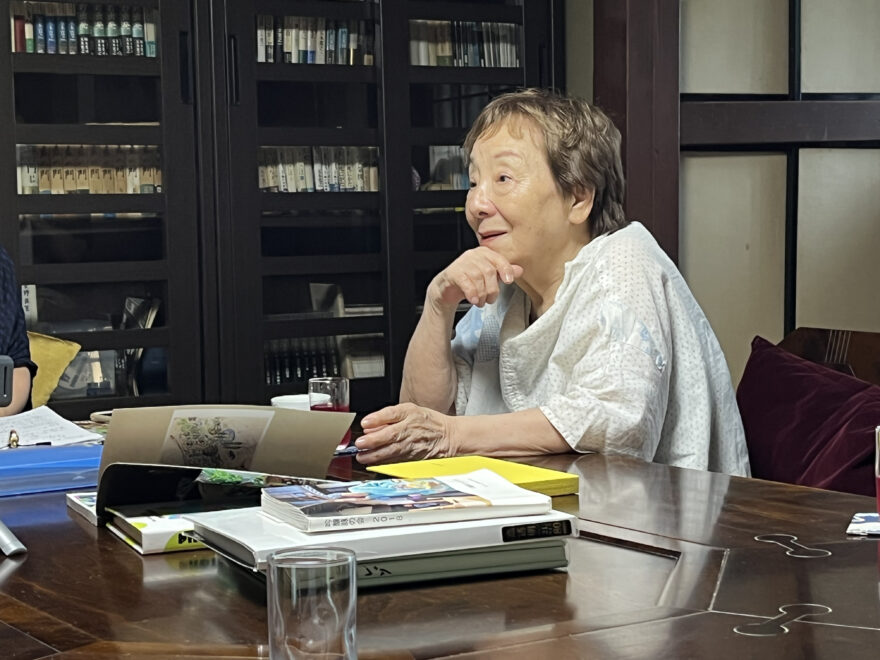
In the afternoon, the group visited the nearby Morihiro Forge Factory. It is said that it takes 8 years from the time an order is placed at the factory until when it will be delivered. It turns out that Ms. Aoyagi had used knives made by Morihiro before and had previously visited the shop as well. During the factory tour, we got to see the knife forging process in action.
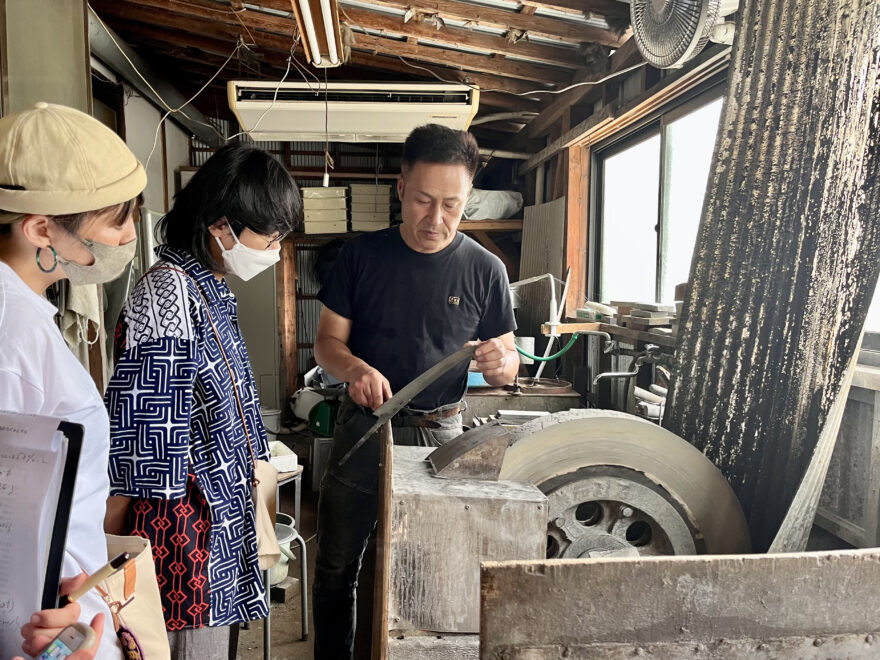
The last stop was Matsunobu Crafts, a manufacturer that specializes in creating wooden tubs called Oke. These tubs have deep roots when it comes to food as they are used in the making of rice casseroles, sushi, and pickled foods, as well as for the brewing of sake and soy sauce. The two members of élab were especially interested in the woodshavings left over from the workshop and took some home as samples. (They later ended up using the shavings as cushioning material for their company’s confectionary deliveries.)
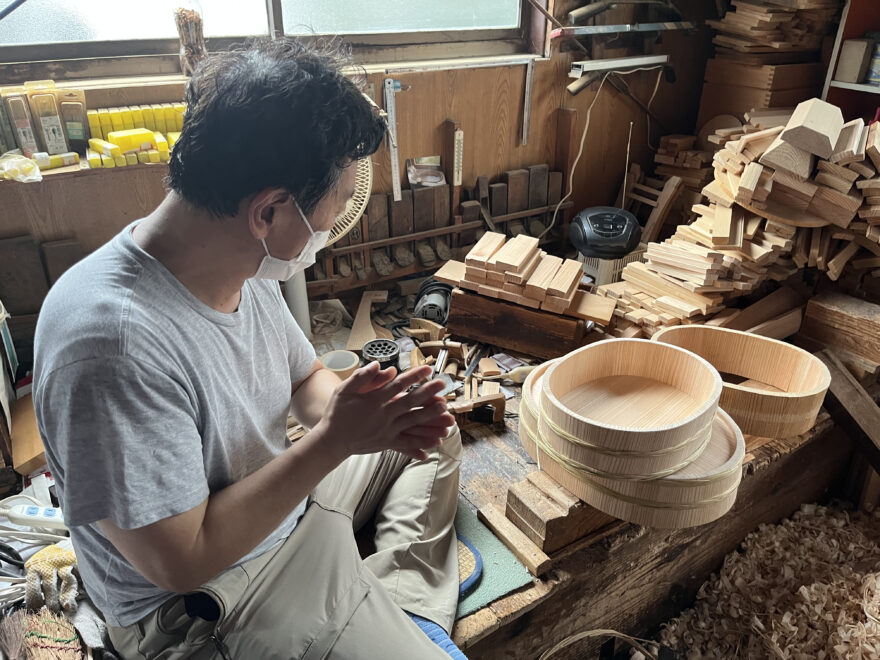
For Ms. Aoyagi and Ms. Oyama, who usually help grow vegetables on organic farms, it was a fresh experience for them to talk with traditional farmers. Chef Aoyagi also mentioned that she learned a lot from her conversation with Ms. Tanaka. The next visit will be in about two weeks!
